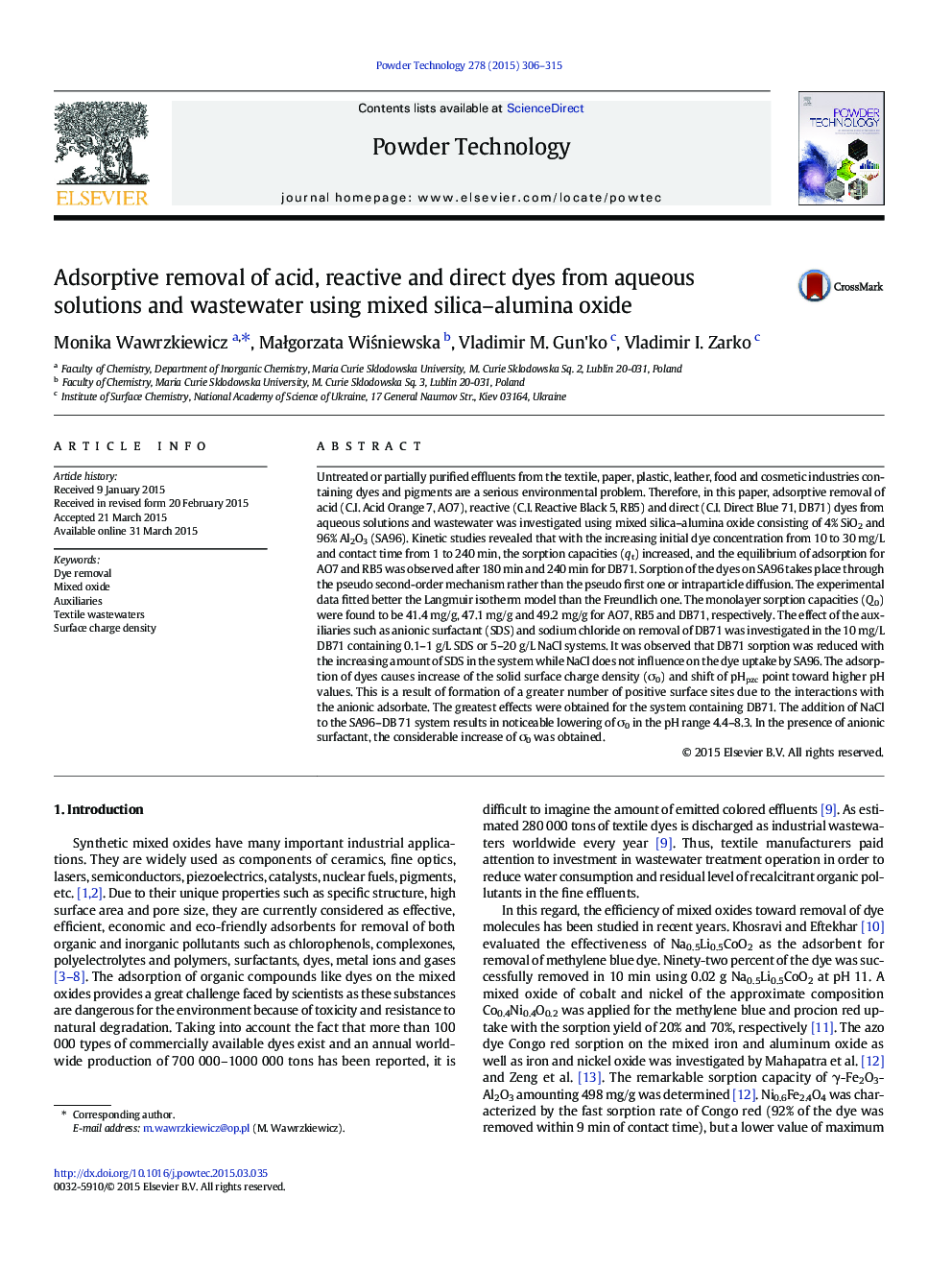| کد مقاله | کد نشریه | سال انتشار | مقاله انگلیسی | نسخه تمام متن |
|---|---|---|---|---|
| 235621 | 465642 | 2015 | 10 صفحه PDF | دانلود رایگان |
• Mixed silica–alumina oxide as adsorbent for acid, reactive and direct dye removal.
• Kinetic data were well described by the pseudo second-order model.
• C.I. Direct Blue 71 possesses the highest affinity for mixed oxide.
• The dye adsorption cause increase of the solid surface charge density.
Untreated or partially purified effluents from the textile, paper, plastic, leather, food and cosmetic industries containing dyes and pigments are a serious environmental problem. Therefore, in this paper, adsorptive removal of acid (C.I. Acid Orange 7, AO7), reactive (C.I. Reactive Black 5, RB5) and direct (C.I. Direct Blue 71, DB71) dyes from aqueous solutions and wastewater was investigated using mixed silica–alumina oxide consisting of 4% SiO2 and 96% Al2O3 (SA96). Kinetic studies revealed that with the increasing initial dye concentration from 10 to 30 mg/L and contact time from 1 to 240 min, the sorption capacities (qt) increased, and the equilibrium of adsorption for AO7 and RB5 was observed after 180 min and 240 min for DB71. Sorption of the dyes on SA96 takes place through the pseudo second-order mechanism rather than the pseudo first one or intraparticle diffusion. The experimental data fitted better the Langmuir isotherm model than the Freundlich one. The monolayer sorption capacities (Q0) were found to be 41.4 mg/g, 47.1 mg/g and 49.2 mg/g for AO7, RB5 and DB71, respectively. The effect of the auxiliaries such as anionic surfactant (SDS) and sodium chloride on removal of DB71 was investigated in the 10 mg/L DB71 containing 0.1–1 g/L SDS or 5–20 g/L NaCl systems. It was observed that DB71 sorption was reduced with the increasing amount of SDS in the system while NaCl does not influence on the dye uptake by SA96. The adsorption of dyes causes increase of the solid surface charge density (σ0) and shift of pHpzc point toward higher pH values. This is a result of formation of a greater number of positive surface sites due to the interactions with the anionic adsorbate. The greatest effects were obtained for the system containing DB71. The addition of NaCl to the SA96–DB 71 system results in noticeable lowering of σ0 in the pH range 4.4–8.3. In the presence of anionic surfactant, the considerable increase of σ0 was obtained.
Figure optionsDownload as PowerPoint slide
Journal: Powder Technology - Volume 278, July 2015, Pages 306–315
